The Fabergé Chamber
On 7 February 2020 at 15:00, we drew aside the velvet curtain to reveal the new, permanent treasury at The Amalienborg Museum. On display is Russian jewellery from the period 1860-1917, with a focus on the close ties between the Danish and Russian monarchies. A selection of the Danish Crown Jewels is also exhibited.
Press photos, photographer Iben Kaufmann: Fabergé, high resolution
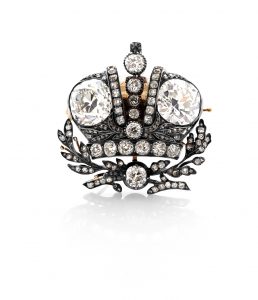
Coronation brooch. One of 18 made in 1896 by Fabergé for the Grand Duchesses of Russia on the occasion of Tsar Nicholas II’s coronation. This example was passed down from Anastasia of Mecklenburg-Schwerin all the way to Princess Elisabeth, who left it to The Royal Danish Collection in her will. Photo: Iben Kaufmann.
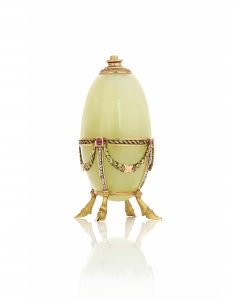
Cigarette lighter in the form of an egg. Made by Fabergé in St. Petersburg during the first half of the 1890s. Master: M. Perkhin. Property of HRH Princess Benedikte. Photo: Iben Kaufmann.
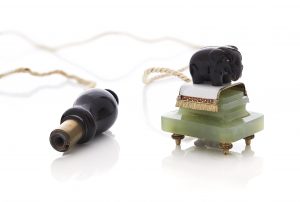
Electric bell in the form of an elephant. Made by Fabergé in St. Petersburg, 1898. Photo: Iben Kaufmann.
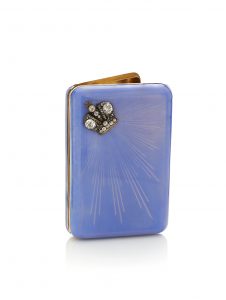
Cigarette case with a lock made of a round brilliant. Made by Fabergé in St. Petersburg in the 1890s. Master: A. Holmström. Photo: Iben Kaufmann.
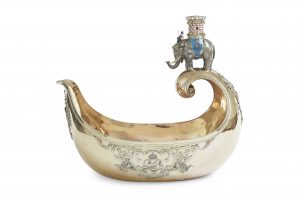
Ceremonial kovsh (drinking vessel) of gilt silver. The handle features the elephant of The Order of the Elephant. Made by Fabergé in St. Petersburg in 1892. Master: Julius Rappoport. The kovsh was a present to Christian IX and Queen Louise from their six children on the occasion of the royal couple’s golden wedding anniversary in 1892. Property of The Danish Royal Family’s Entailed Estate for Movables. Photo: Iben Kaufmann.
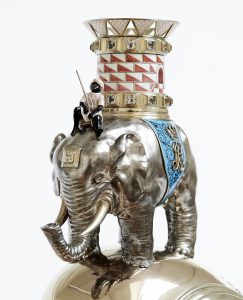
Close up of the elephant of The Order of the Elephant on the handle of the ceremonial kovsh. Photo: Iben Kaufmann.
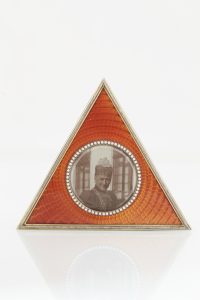
Triangular frame with a photograph of Queen Louise of Denmark. Made by Fabergé in St. Petersburg in 1898. Master: V. Aarne. Photo: Iben Kaufmann.
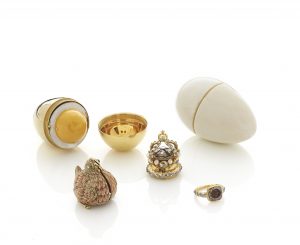
Golden egg with hen. This golden egg was made in France around 1720. It was a present from Charlotte d’Orléans to Caroline of Ansbach, Queen consort of England. It is composed of five separate pieces (ivory egg shall, gold egg shell, hen, crown, and ring) and also served a practical function, as it has a container for perfume. It is not unlikely that the egg was the inspiration for the Russian court jeweller Carl Faberge’s famous eggs, which his company produced in the period 1885-1917. Photo: Iben Kaufmann.
 Dansk
Dansk
 English
English
 Deutsch
Deutsch
